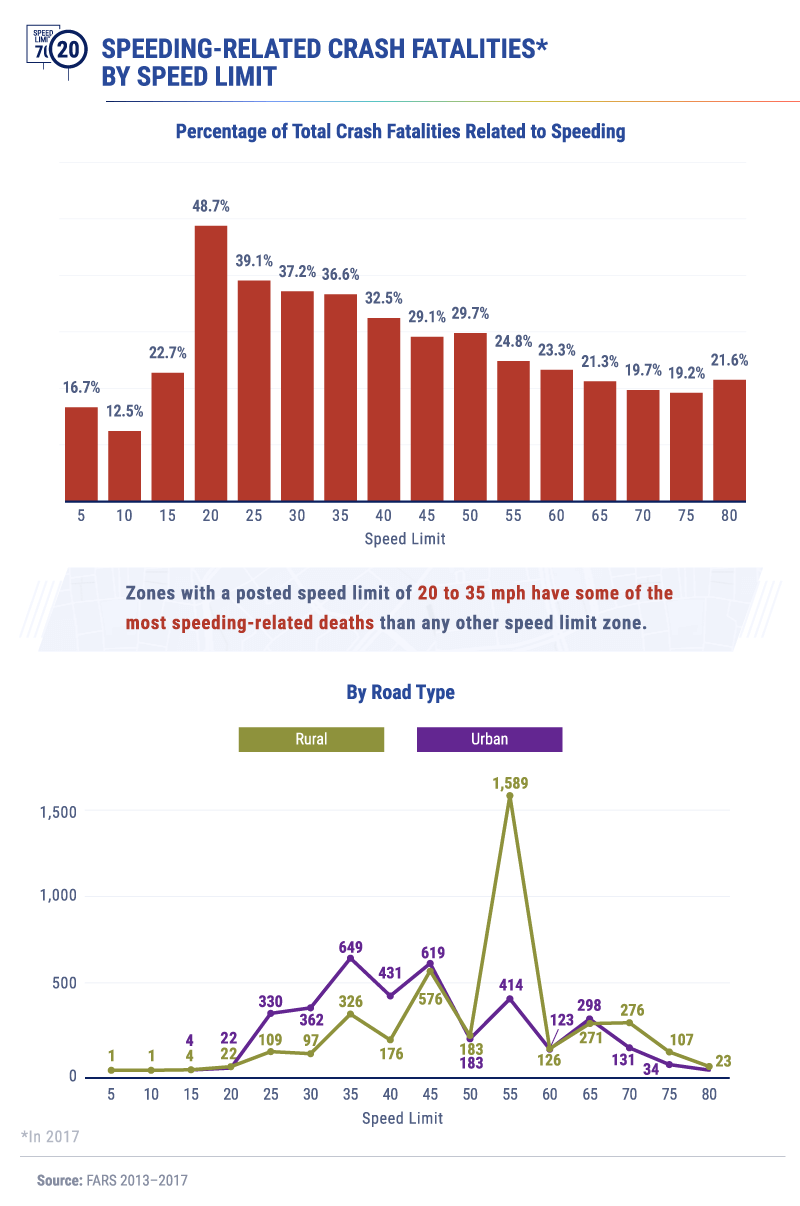If the speed limits in Arizona sometimes seem arbitrary from one neighborhood to the next, that’s because they are.

According to the Federal Highway Administration, cities currently have no agreed-upon metric to determine the appropriate speed limits on roads or freeways. Instead, legislators take a combination of crash risk, traffic volume, roadway design, and location information into consideration to determine how fast drivers should be able to travel without endangering themselves or the people around them.
As found by examining 2017 crash data, the highest volume of fatal accidents occurred on roads with 55 mile-per-hour speed limits, for a total of 2,003 speed-related fatalities. In all, speeding accounted for more than one in four deadly collisions that occurred on roads where drivers should be traveling at or under 55 mph. Overwhelmingly, roughly three quarters of fatal accidents on roads with 55 mile-per-hour speed limits took place in rural environments compared to urban area roadways. Despite the fact that they have less traffic, drivers are sometimes more likely to speed on rural roads where there’s less natural protection or lighting to illuminate dangers that may lie ahead.
Deadly accidents were significantly more common on roads with posted speed limits below 55 mph than in places where drivers can legally go 60 mph or faster. In fact, roadways accommodating the highest legal speeds saw some of the lowest proportions of fatalities attributable to speeding. Such was the case for roads limited to 75 mph, where speeding was culpable in fewer than one in five deaths.
